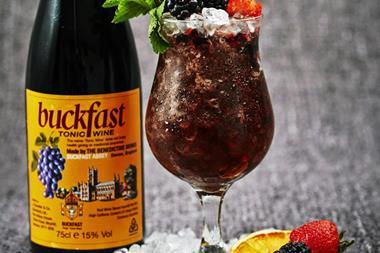
Scots have splashed out an extra £100m on booze since the introduction of minimum unit pricing last year – despite drinking almost 20 million fewer litres, data reveals.
Take-home value sales of alcoholic drinks surged 7.1% to £1.5bn over the 52 weeks to 28 April 2019, compared with a rise of 1% in the prior period. Volume, meanwhile, fell 7.1% [Kantar].
Scottish shoppers were increasingly opting for smaller products and packs to offset price rises, said Kantar, particularly the top 20% of volume buyers in the market.
The effects of MUP “mimic a trend already taking hold across Great Britain – namely that people are drinking less, but spending more”, said Kantar consumer insight director Andy Crossan.
“To a lesser extent the same is happening in England and Wales, where we’re seeing value spend outstrip the rate of volume growth.”
However, he added: “The true success of minimum unit pricing will be measured in the health of the population, not in volumes sold, and that’s a much longer game.”
Advocates of MUP claim it has the potential to prevent hundreds of alcohol-related deaths.
But opponents argue it unfairly penalises shoppers from less-advantaged socio-economic backgrounds and moderate drinkers.
A 50p MUP was introduced in May 2018 after the controversial policy spent five years embroiled in a legal battle with the Scotch Whisky Association, who argued it breached EU and global trade laws.
But the SWA was defeated in the Supreme Court in November 2017 and minimum pricing was given the green light.
A 50p minimum is also to be introduced in Wales this year after being approved by the Welsh National Assembly.
There have been other surprising beneficiaries of MUP: Buckfast has made a significant value gain – up in value by almost a third – because it did not have to change its price, while high-strength white ciders had to up theirs [Nielsen 52 w/e 20 April 2019].



















No comments yet